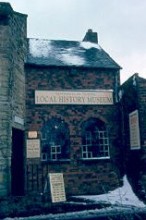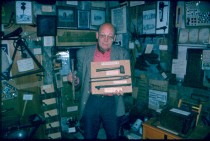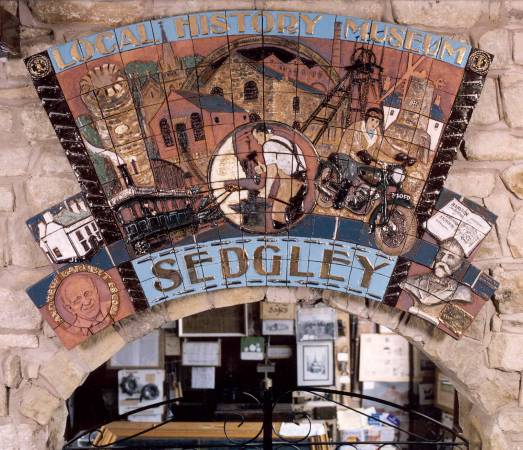Sedgley local history museum was housed in Brick Street, in part of a nail warehouse. The building was constructed sometime around 1830 by Stephen Wilkes, one of Sedgley’s leading nail factors and an enlightened Congregationalist. The Gornal stone buildings were completely restored in the late 1980s and opened by Lord Harmer Nicholls in November 1988.
Cottage Blinds use the main two storey area as a workshop and sales outlet, however the small museum room was packed with artefacts of all shapes and sizes and an extensive collection of written material was available to read.
Unfortunately the museum closed in December 2004 when Cottage Blinds required more space. All the contents were transferred to the The Black Country Living Museum for safe storage. They will not be available for viewing in the foreseeable future.
One especially noteworthy feature of the museum was the mural (shown below), which still hangs over the archway leading from the Cottage Blinds foyer into the room that once housed the museum.


The mural depicts a variety of points of local interest - the nail trade is shown in the centre, the Beacon Tower is clearly visible, and at the bottom left, there is an image of the late Andrew Barnett, who was a leading figure in the formation of the Society in 1984, and a major contributor to the museum collection. Marjorie Ellis wrote a full description of the mural and the history it displays. However, in February 2018 a new key to the mural was released.
It was erected in 1997 after being designed, and executed, over a period of three years by William Horton Burgess, a Sedgley born artist and potter. Other work by the artist includes the mural in the foyer of St.Andrew's Church, Bilston Street, Sedgley, and a number of fine murals for West Bromwich Building Society branches. Dudley MBC contributed generously towards the mural's cost.
This photograph of the mural is used by kind permission of The Black Country Society and was taken by Graham Beckley, the Society's own photographer, in 1997.

